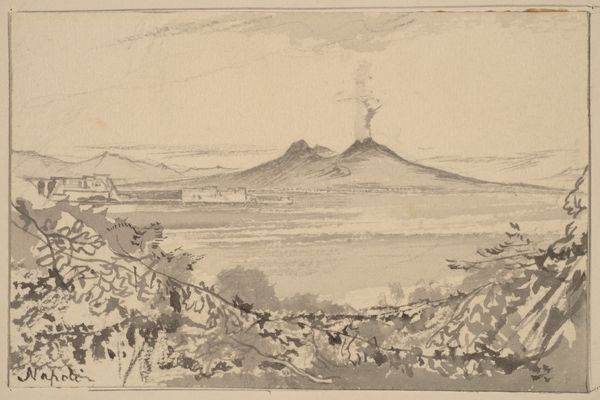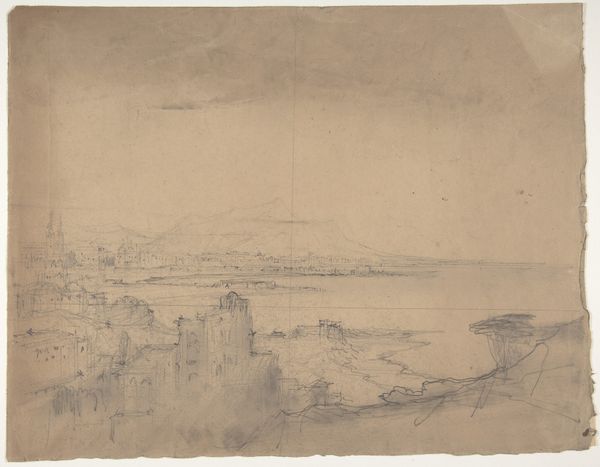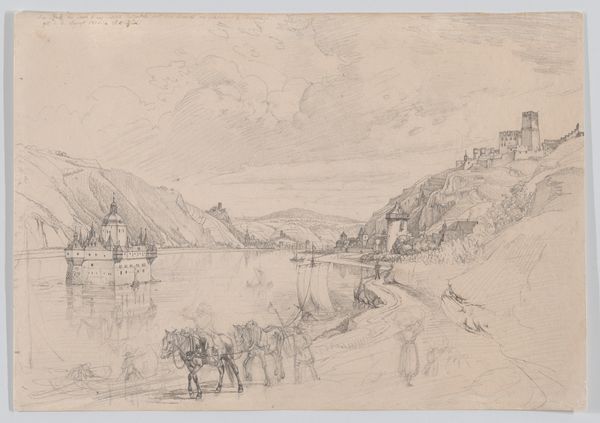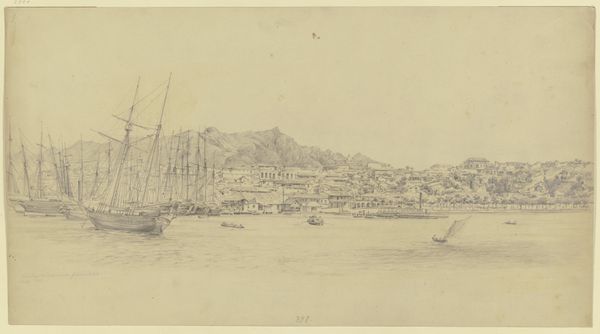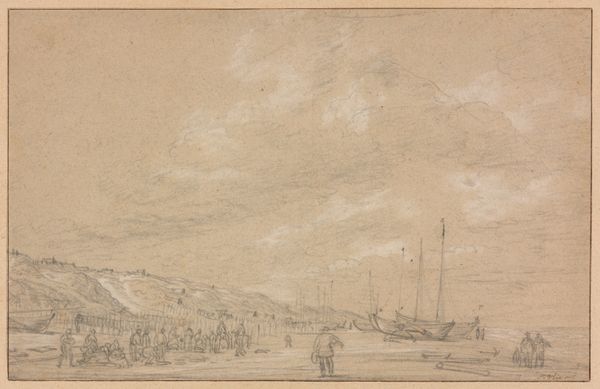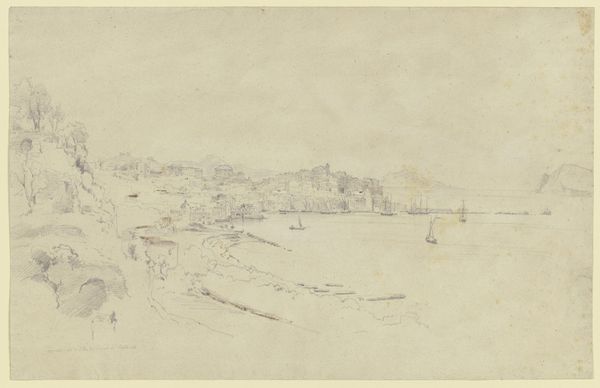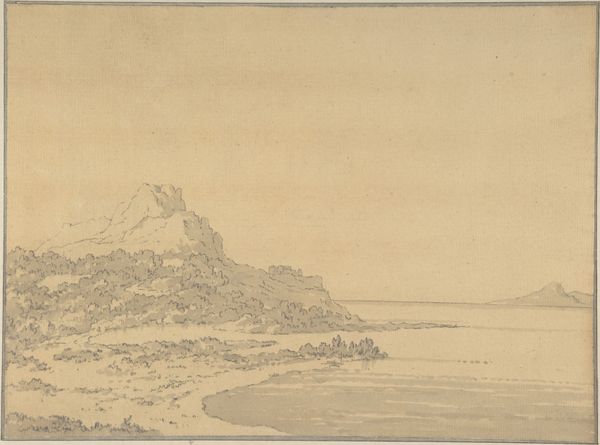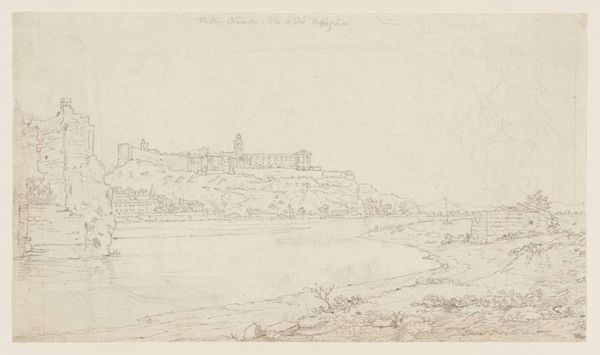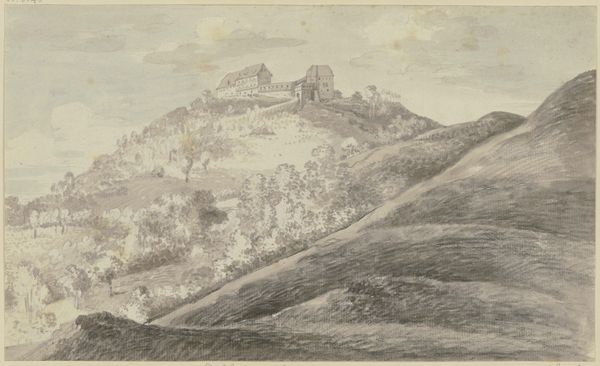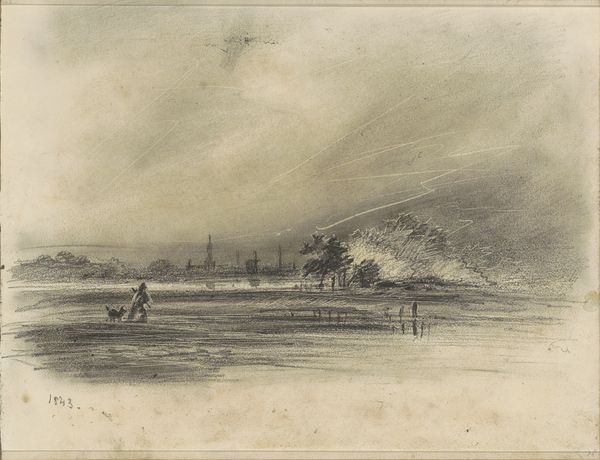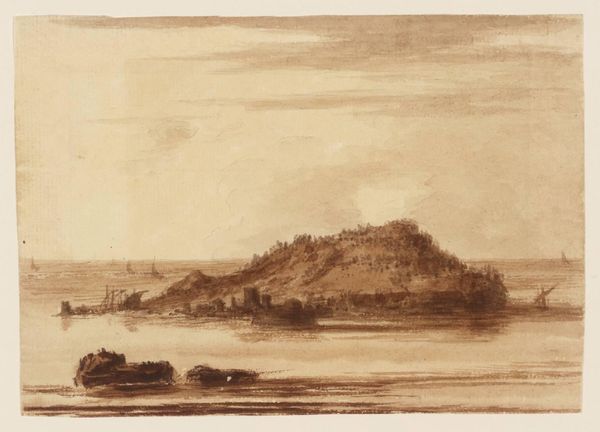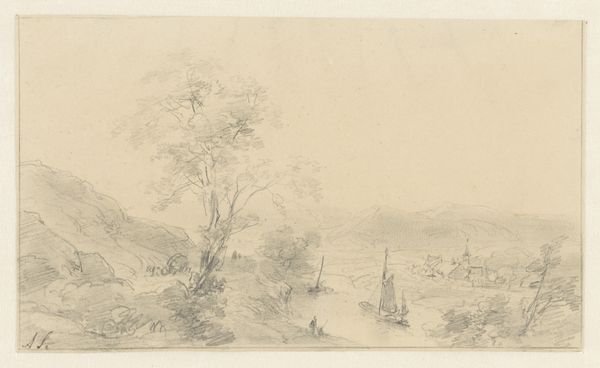
drawing, paper, pencil, graphite
#
drawing
#
landscape
#
paper
#
pencil drawing
#
england
#
pencil
#
water
#
graphite
#
cityscape
#
genre-painting
Dimensions: 189 × 304 mm
Copyright: Public Domain
Editor: So, here we have "Saint Michael's Mount, Cornwall: Regatta Scene," a pencil and graphite drawing on paper, attributed to J. G. Doyle. There’s almost a documentary feel to it, like a newsprint image capturing a local event. What stands out to you in terms of the materiality or even the circumstances around its production? Curator: It's fascinating to consider the social context in which this drawing was created and consumed. The choice of pencil and graphite, relatively inexpensive and readily available materials, suggests this image may have been intended for a wider audience. Editor: How so? Curator: Think about the pre-photographic era. Drawings like this, reproduced as prints, became a key way for people to visualize and engage with places and events they couldn't directly access. This regatta, depicted with such detail, highlights not just a leisure activity, but also a system of labour and social class. Who is participating in the regatta versus who is observing? What materials make up the boats? Are these mass-produced or individually crafted? These details hint at the social hierarchies at play. Editor: That makes me wonder about the artist, Doyle, and who his likely audience would have been. Someone who couldn’t attend but wanted to imagine it, or maybe a participant wanting a memento? Curator: Precisely! The *means* of its making directly inform who would have had access to representations like this. A print made from this drawing wouldn't be limited to the elite. It brings this moment in Cornwall to the burgeoning middle class. Notice also how the textures of the landscape, the castle, even the clothing are rendered through subtle shifts in pressure and shading. It speaks to Doyle's skill, but also his awareness of the reproductive technologies that would translate his work. Editor: So by looking at the drawing itself, its materials and production, we learn so much more about society at the time! Thanks! Curator: Indeed, and reflecting on how images were made and disseminated then can challenge our understanding of value, authenticity and accessibility even today.
Comments
No comments
Be the first to comment and join the conversation on the ultimate creative platform.
